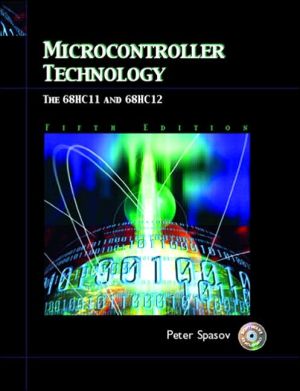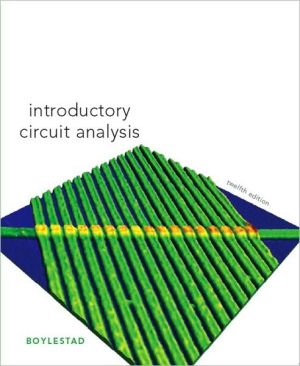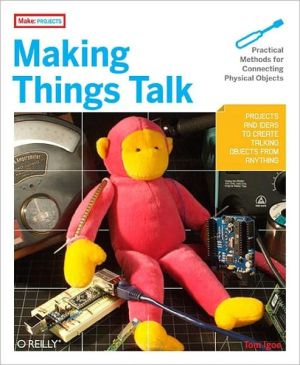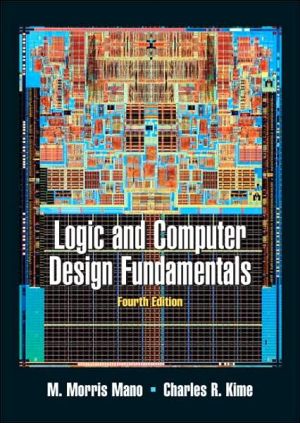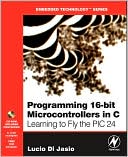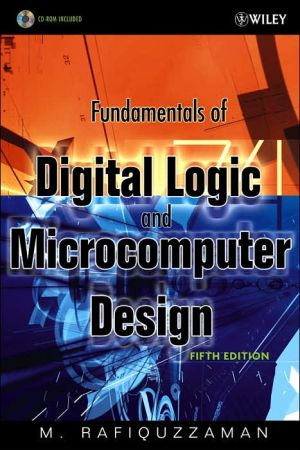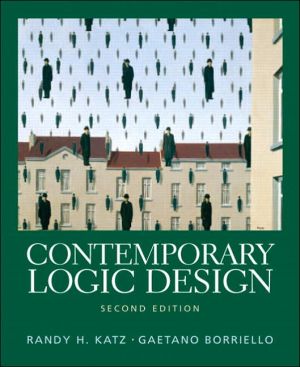Microcontroller Technology: The 68HC11
This updated edition continues to provide readers with the background needed to understand and use any 8-bit microcontrollers, specifically the very popular Motorola 68HC11 and 68HC12. Covering a wide range of topics, at a wide range of levels, it serves as a guide to real-time control software and interfacing, and concentrates on applications throughout—encouraging hands-on practice using computer simulation or an evaluation board. It starts at an introductory level, explaining the...
Search in google:
After introductory material explaining the applications and origins of microcontrollers, a programmer's view is developed, the hardware is described, and instructions are given for connection to the outside world for control applications. The accompanying CD-ROM contains source code, a demo version of the THRSim11 simulator, a IC11 demo C compiler, a cross assembler, and electronic design tools. The book can be used as a text in introductory, interfacing, industrial control courses for students with background in digital logic and numbering systems. This fourth edition uses C program examples throughout, and contains new appendices to reinforce key topics. Annotation c. Book News, Inc., Portland, OR (booknews.com) Booknews The third edition of textbook which provides the background knowledge necessary to understand and use microcontrollers in general and the Motorola 68HC11 in specific. After explaining the applications and origins of microcontrollers, the programmer's view of the 68HC11 is developed and its hardware is described. Annotation c. by Book News, Inc., Portland, Or.
Part 1Introducing Microcontroller Technology11Microcontroller Concepts11.1What Is a Microcontroller? and What Is It Used For?11.2History51.3Top-Down View of Microcontroller Systems81.4Memory Concepts131.5Microcontroller Memory Map16Part 2Software182Programming182.1Assembly and Other Programming Languages192.2Source Code, Object Code, and the Assembler212.3Using High-Level Languages282.4Fetch/Execute Operation of the Central Processing Unit (CPU)312.5The Instruction Set and Addressing Modes362.6Basic Operations652.7Microcontroller Arithmetic and the Condition Code Register742.8Program Flow Control Using Looping and Branching902.9Summary104Exercises1043The Stack, Subroutines, Interrupts, and Resets1123.1Introducing the Stack1123.2Using the Stack to Store Data1143.3Using Subroutines1173.4Modular Programming Using Subroutines1243.5Subroutine Operation1323.6Concept of Interrupts1373.7Interrupt Vectors1413.8Interrupt Operation1443.9Hardware Interrupts and Resets1463.10Software and CPU Control Interrupts1553.11The Kiss of Death: Stack Overflow1563.12Summary157Exercises1584Cross Assembly and Program Development1624.1Introduction to Program Development1624.2Format of the Source Code1634.3Code and Data Segments1674.4Pseudo-Operations1684.5The Assembly Two-Pass Process1774.6Assembler Options and Preprocessor Directives1804.7Hex and Binary Files1854.8Documentation Files1884.9Simulation1914.10Evaluation Boards and Emulation1914.11Summary194Exercises194Part 3Hardware1975Bus Concepts and Modes of Operation1975.1Introduction1975.2The Bus1985.3Tristate2005.4Address Decoding2035.5Modes of Operation2075.6Single-Chip Operating Mode2075.7Expanded Multiplexed Operating Mode2085.8Special Bootstrap Mode2095.9Special Test Operating Mode2115.10System Circuit2115.11Summary213Exercises2146Microcontroller Hardware2166.1Semiconductor Technology2166.2Chip Specifications2236.3Memory Technology2286.4Erasable Programmable Read-Only Memory (EPROM)2306.5Flash Memory2336.6Electrically Erasable Programmable Read-Only Memory (EEPROM)2336.7Configuration Control Register (CONFIG)2396.8RAM and I/O Mapping Register (INIT)2406.9Summary240Exercises2417Clocked Operation2437.1Timing Diagrams2437.2System Clock2457.3Bus Operations2477.4Cycle-by-Cycle Operation2537.5Oscilloscope Test Loops2557.6Logic Analyzer2577.7Transmission Line Effects2607.8Summary263Exercises264Part 4Interfacing2668Interfacing Concepts2668.1Introduction2678.2Input/Output Subsystems and Registers2688.3Memory or Input/Output Mapping2718.4Interfacing Using Polling or Interrupts2748.5The Parallel I/O Subsystem2768.6Serial Systems2778.7Programmable Timer I/O Subsystem2808.8Analog/Digital I/O Subsystem2828.9The I/O Subsystem Registers2848.10Interface Standards2898.11Summary290Exercises2919Parallel Input/Output2939.1Introduction to the Subsystem2949.2Seven-Segment (LED) Display Output2979.3Liquid-Crystal Displays (LCDs)3049.4Keyboard Interfacing3119.5Other User Input/Output3249.6Strobed Input/Output3249.7Full Handshake Input/Output3309.8Parallel Interface Standards3389.9Summary352Exercises35510The Serial Subsystems35810.1Asynchronous Communications Systems35910.2The Serial Communications Interface (SCI)37010.3SCI Registers38010.4Synchronous Serial Input/Output39110.5The Serial Peripheral Interface (SPI)39310.6SPI Topologies and Applications39310.7SPI Software39910.8SPI Error Handling40810.9Network Communications40910.10Summary412Exercises41311Programmable Timer Operations41711.1Overview41711.2Output Compare42311.3Input Capture44011.4Pulse Accumulator45111.5Real-Time Interrupt45911.6Summary462Exercises46312The Analog Converter Subsystem46512.1Concepts and Terminology46612.2Transducers47012.3Digital-to-Analog Converters47812.4Analog-to-Digital Converters48412.5The Built-in A/D Subsystem48812.6Summary494Exercises495Part 5The Microcontroller World49713Application Control Software49713.1Boolean Logic Control49813.2Sequencers50013.3Sequential Machines50313.4Feedback Control of the Analog World51113.5Digital Signal Processors51713.6Using the C Language52413.7Multitasking54713.8Fuzzy Logic55413.9Summary571Exercises57214Applications57514.1Automotive-Engine Control57514.2Consumer Electronics: Automatic Camera58214.3Computer Peripherals: Dot Matrix Printer59014.4Society and Microcontroller Technology60115Eight-Bit Microcontroller Families60215.1Microcontrollers and the Semiconductor Industry60315.2Motorola Families60415.3The Intel 8051 Core61515.4Survey of Other Families62415.5Choosing a Microcontroller62415.6Summary628Appendices630AInstruction Set Summary630BQuick Reference638MC68HC11E9 Block Diagram639Data Book and Programming Reference Guide Tables and Figures641Cross-References to Other Data646CFurther Information647References647Some Trade Magazines648Manuals649Sources649DConventions651C Conventions651Logic Levels for Digital Signals652Numbering Systems652Memory653Cross Assembly654Data Manipulation656Measurement Quantities656EHeader and Library File Source Listings658HC11REG.H658HC11VEC.H659FDigital Logic and Binary Codes662A Digital Logic Primer662Number Systems666Number Conversions668Binary Ranges670Other Codes676GBasic Waveforms677HInternet and Disk Resources679Internet679Disk Resources679Glossary687Abbreviations695Index699
\ BooknewsThe third edition of textbook which provides the background knowledge necessary to understand and use microcontrollers in general and the Motorola 68HC11 in specific. After explaining the applications and origins of microcontrollers, the programmer's view of the 68HC11 is developed and its hardware is described. Annotation c. by Book News, Inc., Portland, Or.\ \
